Shruti Rajasekar, an Indian-American composer and vocalist, is in news for her new work 'Light Eternal’ which premiered in the final concert of the prestigious Hatfield House World of Music Festival on the occasion of Gandhi Jayanti on October 2. What made the occasion even more special for her was the fact that her mother Vidushi Nirmala Rajasekar played the veena at the premiere.
In a candid conversation with Eastern Eye, Shruti talks in detail about ‘Light Eternal,’ the experience of sharing the satge with her mother, the importance of live performances, what made her pursue this profession, and more. Edited excerpts...
Shruthi, your new work 'Light Eternal’ premiered in the final concert of the prestigious Hatfield House World of Music Festival on the occasion of Gandhi Jayanti. Tell us something about the same.
I am incredibly honored to have written "Light Eternal" for the wonderful ORA singers and my mother, Vidushi Nirmala Rajasekar. I was especially excited that this piece premiering at the Finale of this year's Hatfield House Chamber Festival. The theme of the piece was Light, which we explore from Hindu and Christian perspectives. This is reflected in the second line of the Sanskrit mantra I have set to music: "tamaso ma jyotirgamaya", which means "from darkness lead me to light". Since the premiere happened on the day we remember Gandhiji, it was therefore particularly special to also feature the first line of the mantra: "asato ma sadgamaya", which means "from untruth lead me to truth". Philosophical verses about truth, satya, were guiding lights in Gandhiji's life, as can be seen from his many writings. He and the Satyagraha movement are the embodiment of the final text of the piece, written by Erasmus: “Give light and the darkness will disappear of itself.”
How excited or nervous were you ahead of the premiere?
I was very excited! We were experimenting with something new in this piece. For me as the composer, the question was this: can I form a musical collaboration between the choir and the Saraswati veena in which each musical force is learning from and responding to each other and, at the same time, create the circumstances that best harness the improvisational prowess of a Carnatic musician? I believe the resulting piece has taught all of us something new, including myself. For example, the first raga of the piece has rich Carnatic gammakams (oscillations/ornamentations); through this project, I have realized how beautiful and haunting this raga becomes when rendered as choral harmonies.
Your mother, Nirmala Rajasekar, played the veena at the premiere. How does the presence of your mother on the same platform help you as an artiste?
It's a privilege to collaborate with my mother and also an examination for me because she is first and foremost my guru! Every time I listen to her perform, it is an amazing lesson for me. I’m so honored to have the opportunity to work with leading and established artists like my mother, Nirmala Rajasekar, mridangam vidwan Thanjavur K. Murugaboopathi, and conductor Suzi Digby.
It’s my good fortune to be collaborating with my mother in two forums during this UK tour; she is one of the featured artists of the premiere of my large piece Sarojini, commissioned by Hertfordshire Chorus, which tells the story of the Indian Independence movement through Sarojini Naidu’s perspective. We premiere Sarojini on October 22 in St. Albans Cathedral. Both collaborations are special - Light Eternal explores the intimate setting of veena & voices, and Sarojini has 150+ musicians on stage engaging in cross-cultural dialogue.
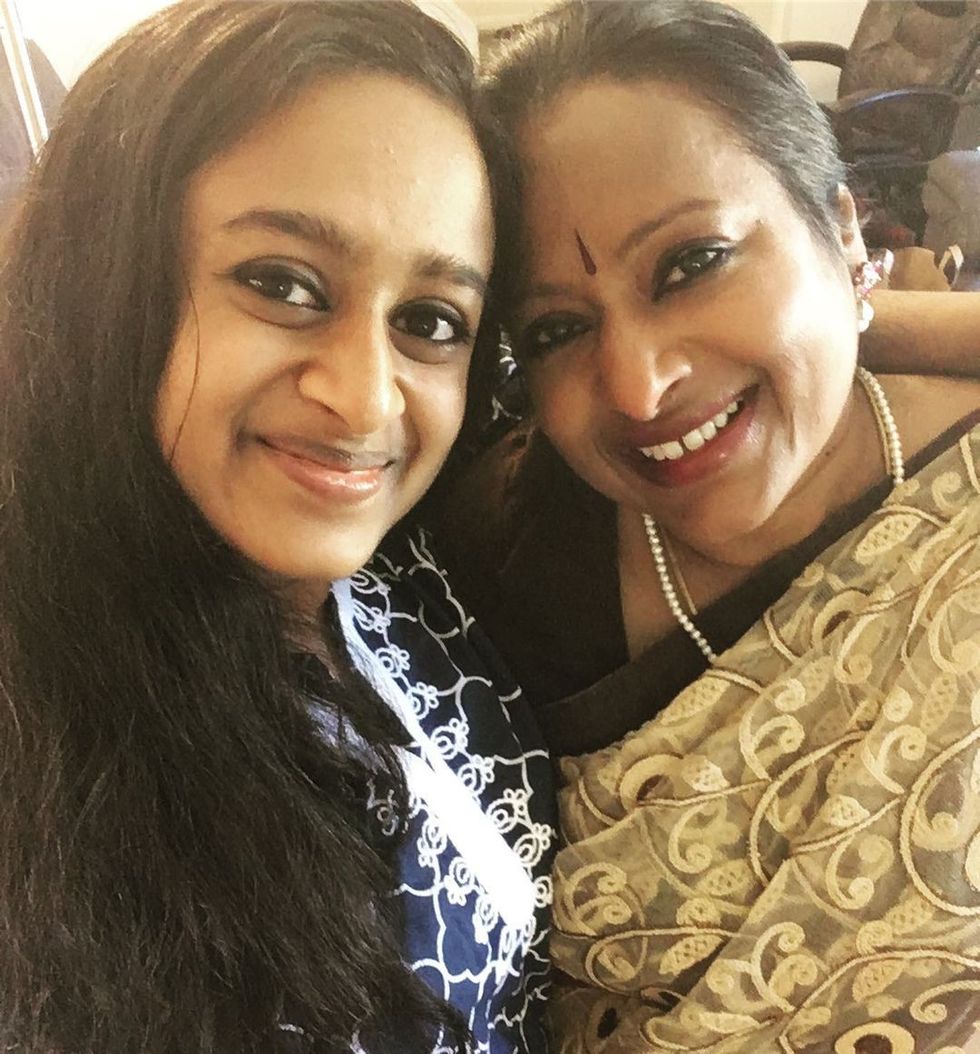
Do you see any kind of change in the way people are consuming music in the post-Covid era?
I think we now realize the power of video recordings, and our industry has made leaps and bounds to make this a fulfilling experience for listeners. At the same time, the pandemic has taught us how valuable, and indeed precious, live music is. There’s something very special about listeners being able to tune into concerts from all over the world, yet I also think there’s nothing quite like being in the room with the performers and other listeners.
What made you want to pursue this profession?
I always knew I wanted music to be a large part of my life, but despite being the daughter of a professional musician, I didn’t always know that it would be my profession! It was in college that I realized that while I love lots of things, I love music most. The best part of this profession is that I have the chance to explore my many different interests through the medium of music – I research all kinds of fascinating historical and political moments for the contexts behind some of my pieces, I engage deeply with poetry and other kinds of texts, I have collaborated with scientists and professionals of other disciplines to interpret their work musically, and, most special of all, I have the opportunity to work closely with people everyday and learn from their perspectives. In short, this is an amazing profession for a curious person who loves to do community-oriented work!
How do you look back at your journey so far and what have been some of the milestones you are proud of?
This premiere and our other UK collaborative project, Sarojini, are definitely milestones in our journey. It’s special that these two projects are happening here in the UK, where I did my two master’s degrees (at SOAS and RNCM), and where I also studied abroad as an undergraduate (at RCM). The UK, for me, is the “third parent” in my cultural mix. This country has been my beloved home, and through its colonial and cultural legacies in India and the USA, it has also shaped my musical and broader identity.
Who helped you most in your journey thus far?
Countless teachers, mentors, and collaborators have believed in me. I can’t begin to express how grateful I am to these supporters. In addition to my amazing family in India and the US, I’m also fortunate to have a robust community of beloved Aunties and Uncles cheering me on– they are the family members of our home-away-from-home, we always say.
If I am not wrong, you have lived in several parts of the world. How does that help your music?
My musical ideas are enriched by encountering new perspectives and new ideas, especially when I’m able to engage with them deeply. I’m thankful that in each place I’ve lived, I’ve been made to feel welcome by the local community.
What separates you from other Indian-American artists?
I’m grateful to the South Asian-American artists before us who paved the way for so many of us to be able to create music that expresses ourselves. What I appreciate about the growth of our field is that it means that we’re not labeled as simply “the Indian music creator” but, rather, by the individuality we each bring to our work.
What is your favorite part about this line of work? Your least favorite? Why?
There are lots of favorites to choose from, but I return to the ability to collaborate and form deep relationships with people of varied experiences. It’s a gift, and feels like the essence of life on this Earth.
Least favorite - that’s an interesting question! It’s no secret that this industry has some financial precarity. What worries me is that I see more and more fields becoming that way; the rise of the gig economy has also meant less security for workers around the world. If the essence of life is forming relationships, then it follows that it is our duty to take care of each other, too. I hope to see more of that in the world.
What singers do you admire most and why?
I’m particularly inspired by the Carnatic greats, and there is always a special place in my heart for the trinity of Carnatic vocalists of the 20th century: Smt. D.K. Pattammal, Smt. M.S. Subbulakshmi, and Smt M.L. Vasanthakumari. Their music and their paths are an inspiration for women and gender minorities.

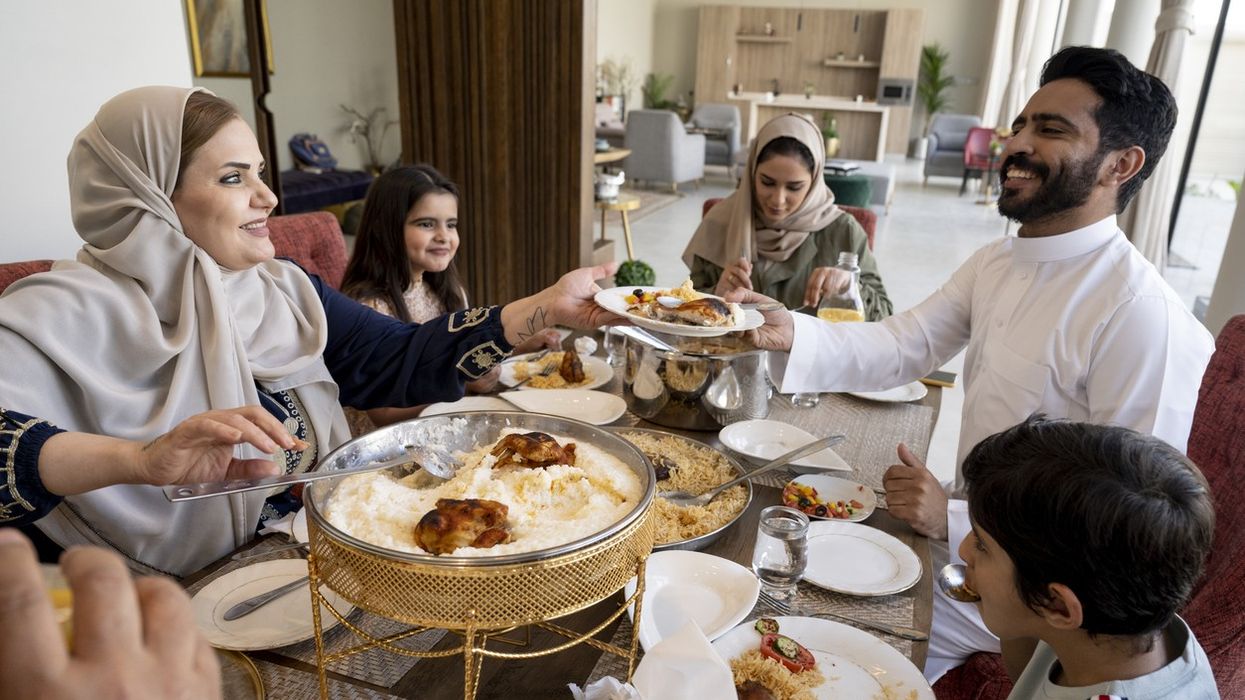




 A sneak peek into the Miraj app – where Quranic stories, animations, and audiobooks bring faith to life for kids
A sneak peek into the Miraj app – where Quranic stories, animations, and audiobooks bring faith to life for kids Step inside Ayatique’s world of AI-powered Quranic learning—interactive stories and gamified lessons that make spirituality exciting
Step inside Ayatique’s world of AI-powered Quranic learning—interactive stories and gamified lessons that make spirituality exciting Explore Noor Kids Digital Ramadan Camp! A vibrant online platform filled with faith-based storytelling, challenges, and nasheeds
Explore Noor Kids Digital Ramadan Camp! A vibrant online platform filled with faith-based storytelling, challenges, and nasheeds Unbox the All-in-One Quran Activity Kit—an engaging set of hands-on learning tools designed to spark curiosity and faith in kids
Unbox the All-in-One Quran Activity Kit—an engaging set of hands-on learning tools designed to spark curiosity and faith in kids Discover the Fun Dough Ramadan Countdown Calendar! A creative way to celebrate each day of Ramadan with exciting hands-on activities
Discover the Fun Dough Ramadan Countdown Calendar! A creative way to celebrate each day of Ramadan with exciting hands-on activities











 The Blue Mosque and Hagia Sophia glow under stunning mahya lights, spreading messages of faith and peace during Ramadan in IstanbulInstagram/TRTEntertainment
The Blue Mosque and Hagia Sophia glow under stunning mahya lights, spreading messages of faith and peace during Ramadan in IstanbulInstagram/TRTEntertainment  Cairo’s streets come alive with the warm glow of colourful Fanous lanterns, a beloved Ramadan tradition that lights up the nightGetty Images
Cairo’s streets come alive with the warm glow of colourful Fanous lanterns, a beloved Ramadan tradition that lights up the nightGetty Images Javanese Muslims Prepare For Ramadan With Padusan RitualGetty
Javanese Muslims Prepare For Ramadan With Padusan RitualGetty  town crier, dressed in traditional robes, walks the streets at dawn, waking people up for suhoor with his flute Youtube
town crier, dressed in traditional robes, walks the streets at dawn, waking people up for suhoor with his flute Youtube Dastarkhwan, offering free iftar meals to anyone in need—because in Pakistan, Ramadan is all about sharingGetty Images
Dastarkhwan, offering free iftar meals to anyone in need—because in Pakistan, Ramadan is all about sharingGetty Images  People from different backgrounds gather at a mosque breaking fast together and fostering interfaith connections over delicious iftar mealsGetty Images
People from different backgrounds gather at a mosque breaking fast together and fostering interfaith connections over delicious iftar mealsGetty Images 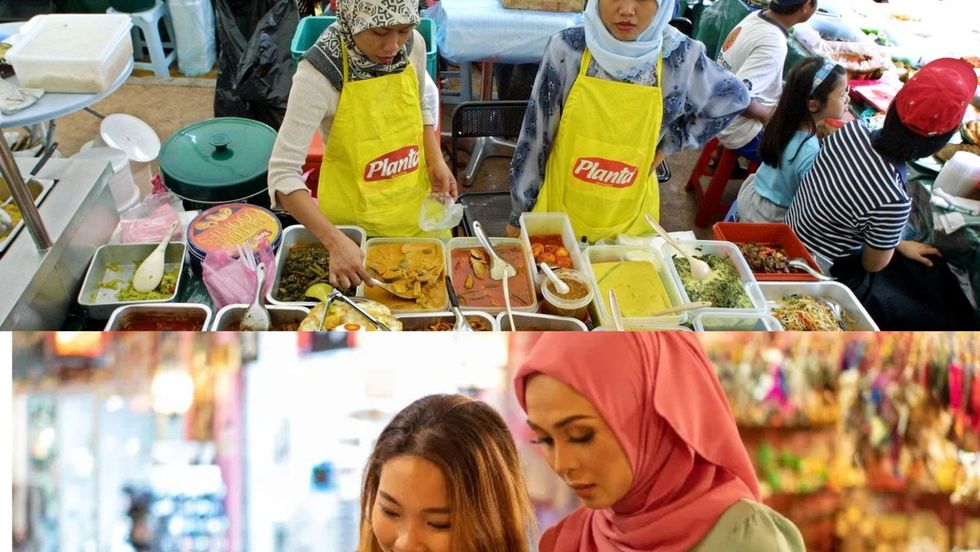 A bustling Malaysian Ramadan bazaar, filled with stalls Getty Images
A bustling Malaysian Ramadan bazaar, filled with stalls Getty Images  A historic cannon fires at sunset, a centuries-old tradition in Saudi Arabia that signals the time for iftar during RamadanGetty Images
A historic cannon fires at sunset, a centuries-old tradition in Saudi Arabia that signals the time for iftar during RamadanGetty Images 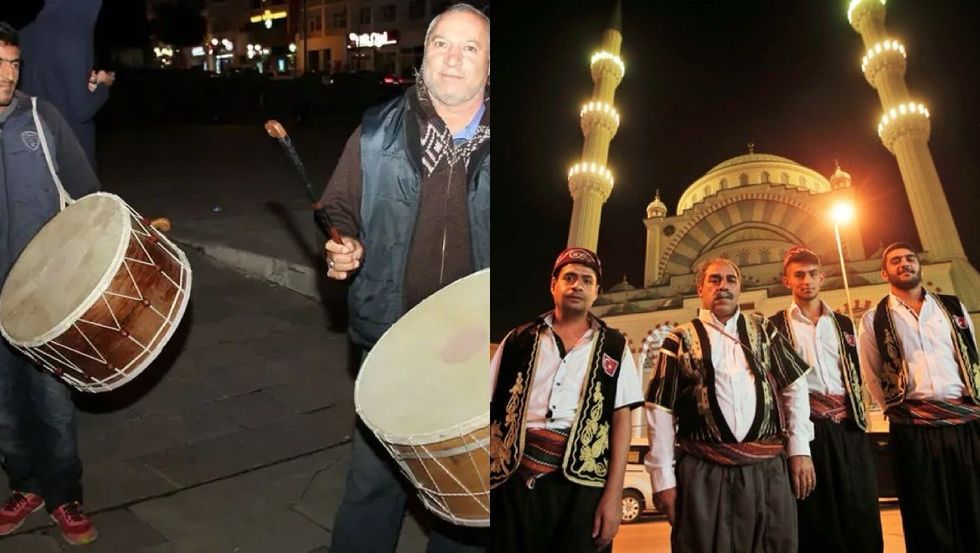 Traditional Turkish drummers roams the streets at dawn, keeping the ancient Ramadan tradition alive by waking people for suhoor with rhythmic beatsGetty Images
Traditional Turkish drummers roams the streets at dawn, keeping the ancient Ramadan tradition alive by waking people for suhoor with rhythmic beatsGetty Images  Young Filipinos gently presses an elder’s hand to their forehead, a heartfelt Ramadan tradition that symbolizes respect, love, and family bondsDreamtime
Young Filipinos gently presses an elder’s hand to their forehead, a heartfelt Ramadan tradition that symbolizes respect, love, and family bondsDreamtime 
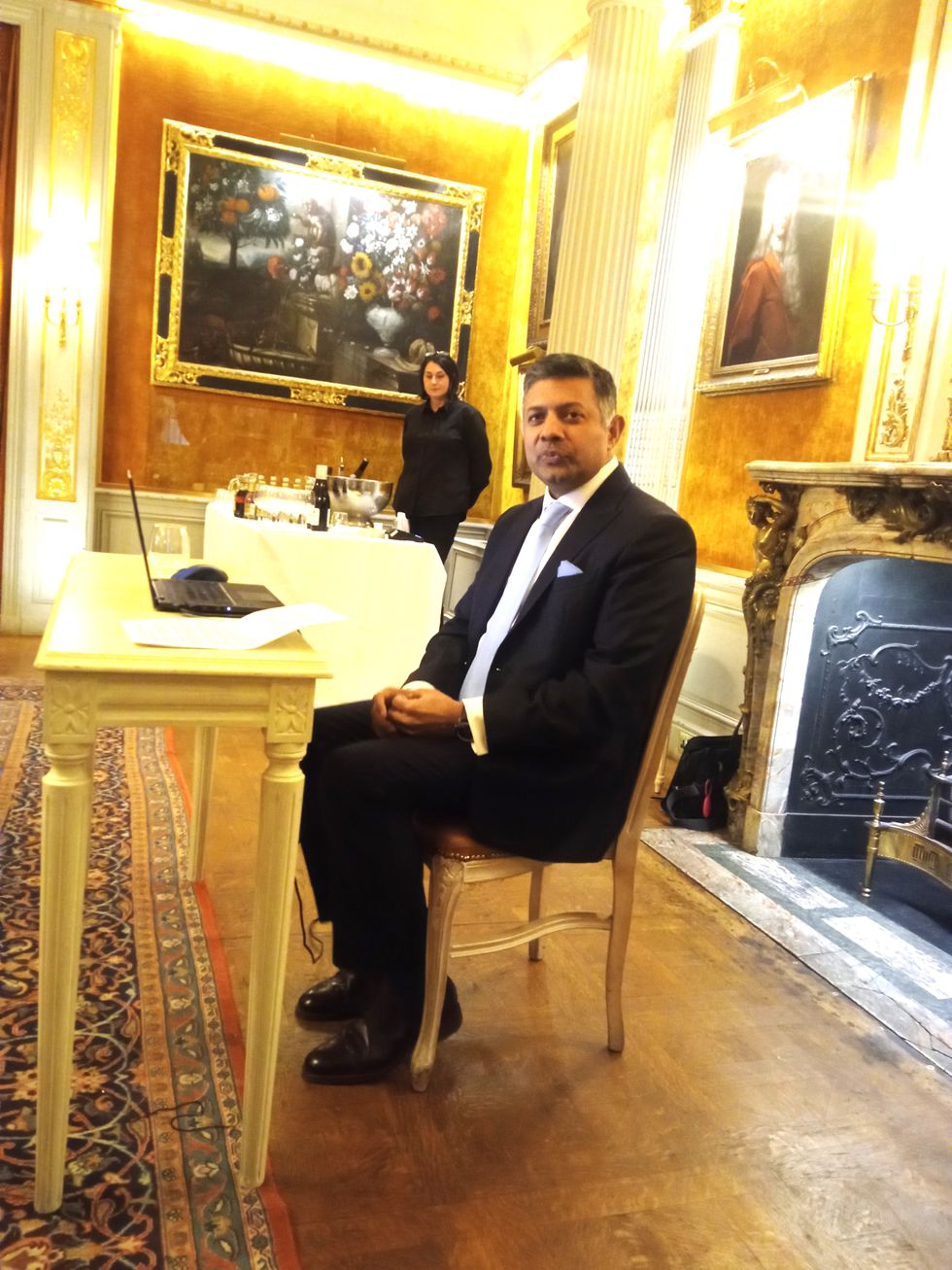 Doraiswami addresses the gathering
Doraiswami addresses the gathering
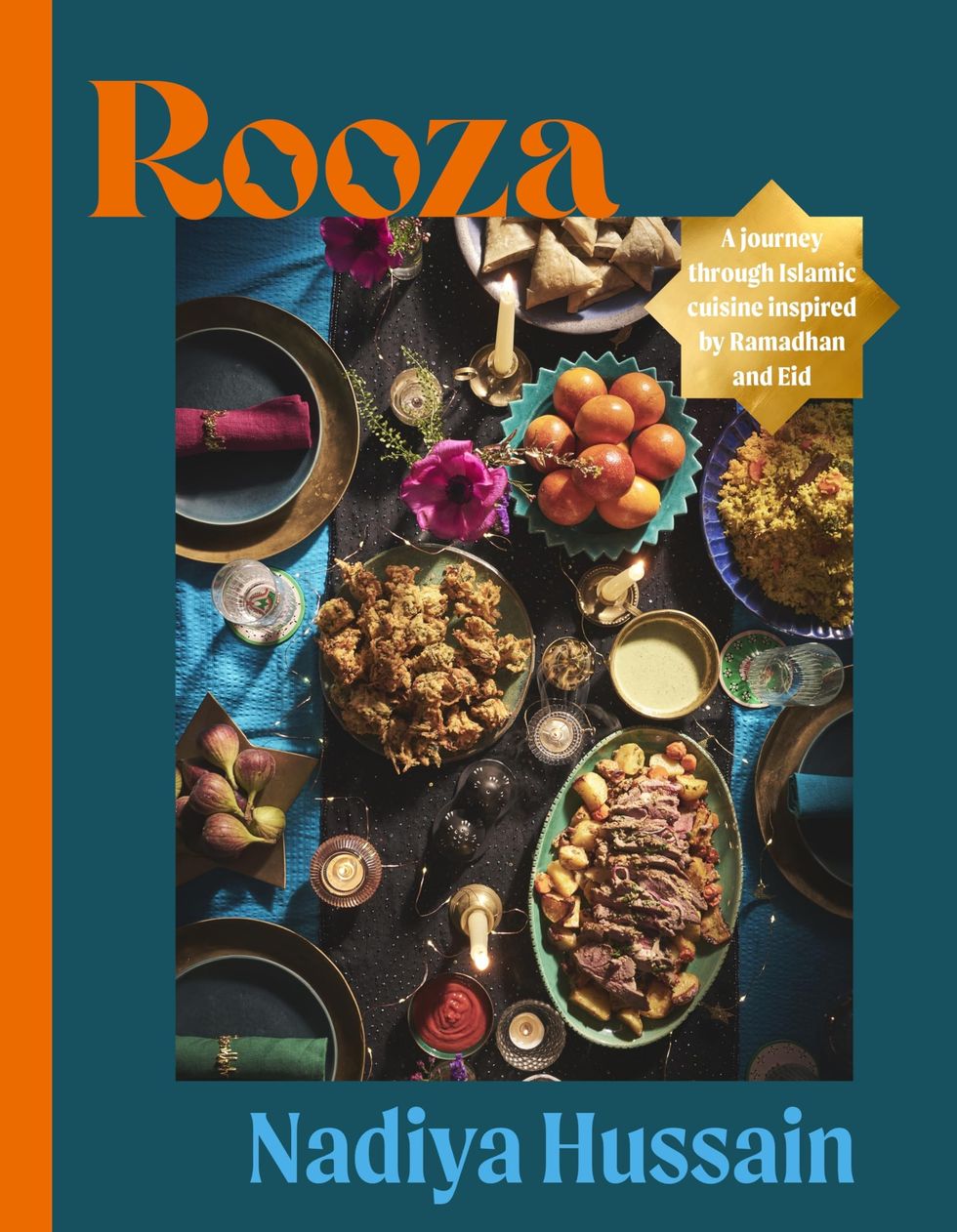 The cover of her book
The cover of her book

